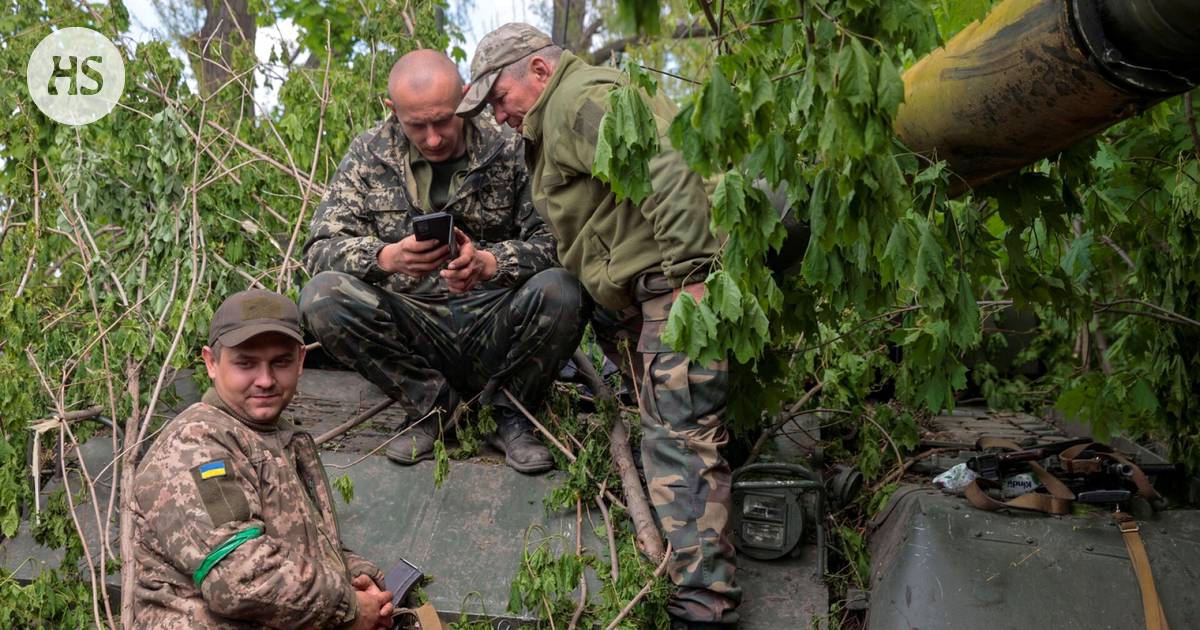Antti Pihlajamaa, a research officer at the National Defense University, considers Ukraine’s counterattack and pushing Russia 40 kilometers east to be a significant step forward in a short time.
Ukraine has managed to carry out a major counterattack this week near the city of Kharkiv in northeastern Ukraine.
American Institute for the Study of War (ISW) said in his progress reportthat Ukrainian forces forced Russian troops to withdraw about 40 kilometers east of the city.
This is the most significant Ukrainian counterattack in the war in recent weeks. The front lines have remained largely in place since Russia launched a so-called major offensive in eastern Ukraine in mid-April, although Russia has managed to take over small areas.
Civilians will be evacuated from the Russian-occupied village near Kharkiv on Monday.
In the ISW progress report states that data from U.S. defense officials are the same as those reported by both Ukrainian and Russian sources: Ukrainian troops have seized the Staryj Saltiv region near Kharkov this week.
However, ISW estimates that the Ukrainian counterattack will not affect the transport of Russian troops to the city of Izjum, about 125 kilometers southeast of Kharkiv.
Izjum is an important bridgehead for Russia in its attempts to attack the industrial cities of Slovjansk and Kramatorsk in the Donetsk region.

National Defense College research officer Antti Pihlajamaa considers Ukraine’s counterattack and the pushing of Russia 40 kilometers to the east to be a major step forward in a short time.
“Such requires that either the Ukrainian troops have made a local break-up or Russia has decided to withdraw from the region for tactical reasons,” says Pihlajamaa.
Although the counterattack is significant, according to Pihlajamaa, it does not completely eliminate the threat to Kharkov.
“The counterattack has been successful in one direction for about 40 kilometers, which means it is at or outside the range of the artillery range. However, Russia is even closer in the other direction, so the artillery threat to civilians has not completely subsided, although it has eased. ”

Ukrainian soldiers in the Kharkiv region near the Russian border on Monday.
Rowan according to him, a counterattack of this scale does not threaten Russian service routes to the city of Izjum, for example, but it forces Russia to rethink the situation.
Russia will have to pay special attention to the protection of maintenance routes, especially if Ukraine’s counterattacks continue, Pihlajamaa estimates.
“If Ukraine succeeds in carrying out more counterattacks and making it more difficult for Russia to service supplies, it would weaken the attacks in the Luhansk region. Russia now has to assess these issues. ”
Although Ukraine has succeeded in a local counterattack in Kharkov, which, according to experts, currently does not have enough troops and equipment for a large-scale counterattack operation.
President of Ukraine Volodymyr Zelenskyin adviser Oleksi Arestovych said on Thursday, according to news agency Reuters, Ukraine is unlikely to launch a counterattack against Russia until mid-June. Pihlajama also believes in this.
“Ukraine probably does not yet have the capacity for a large-scale military operation to try to take the initiative into its own territory in eastern Ukraine. At the moment, Ukraine seems to be focusing on looking for vulnerable targets in Russian forces that it is able to attack. It is not good for Ukraine to try to attack Russia’s hard top. “
